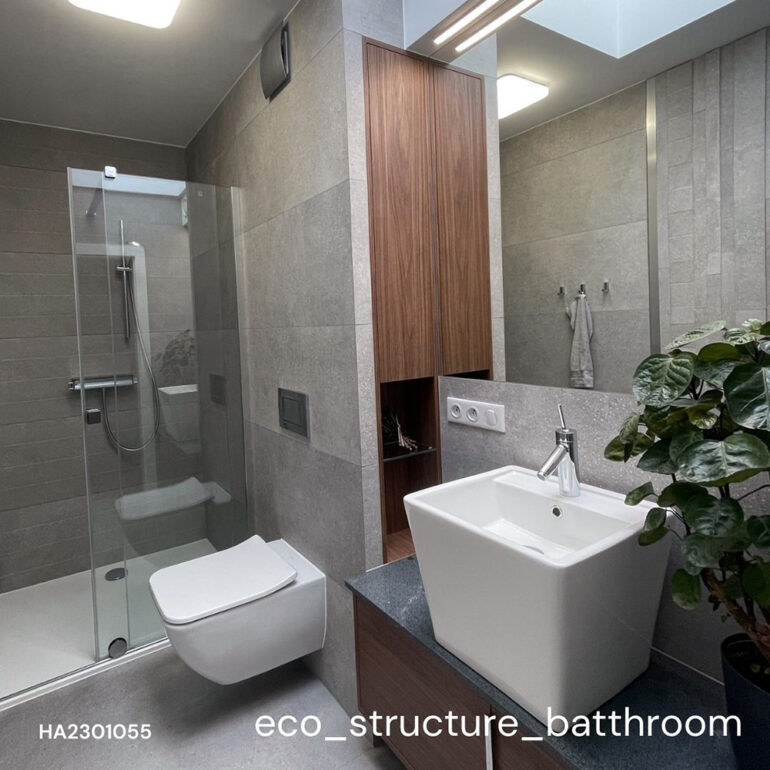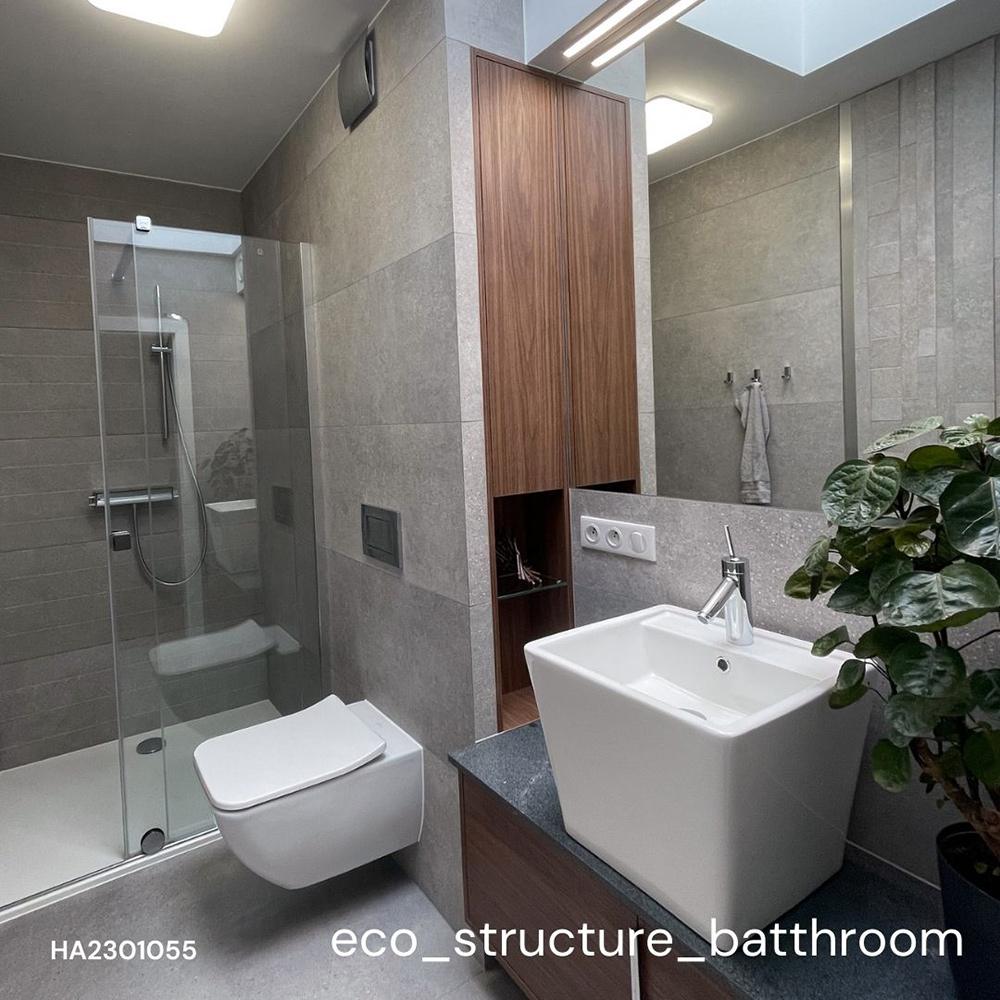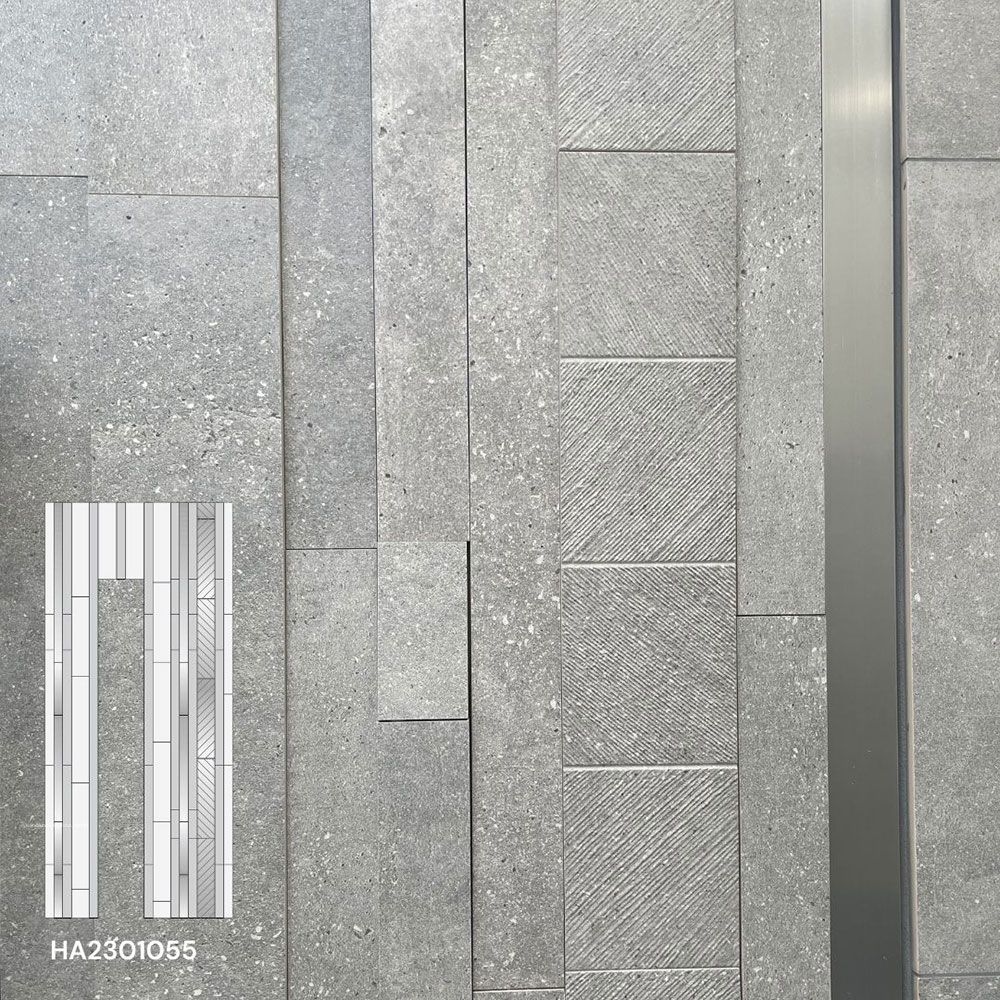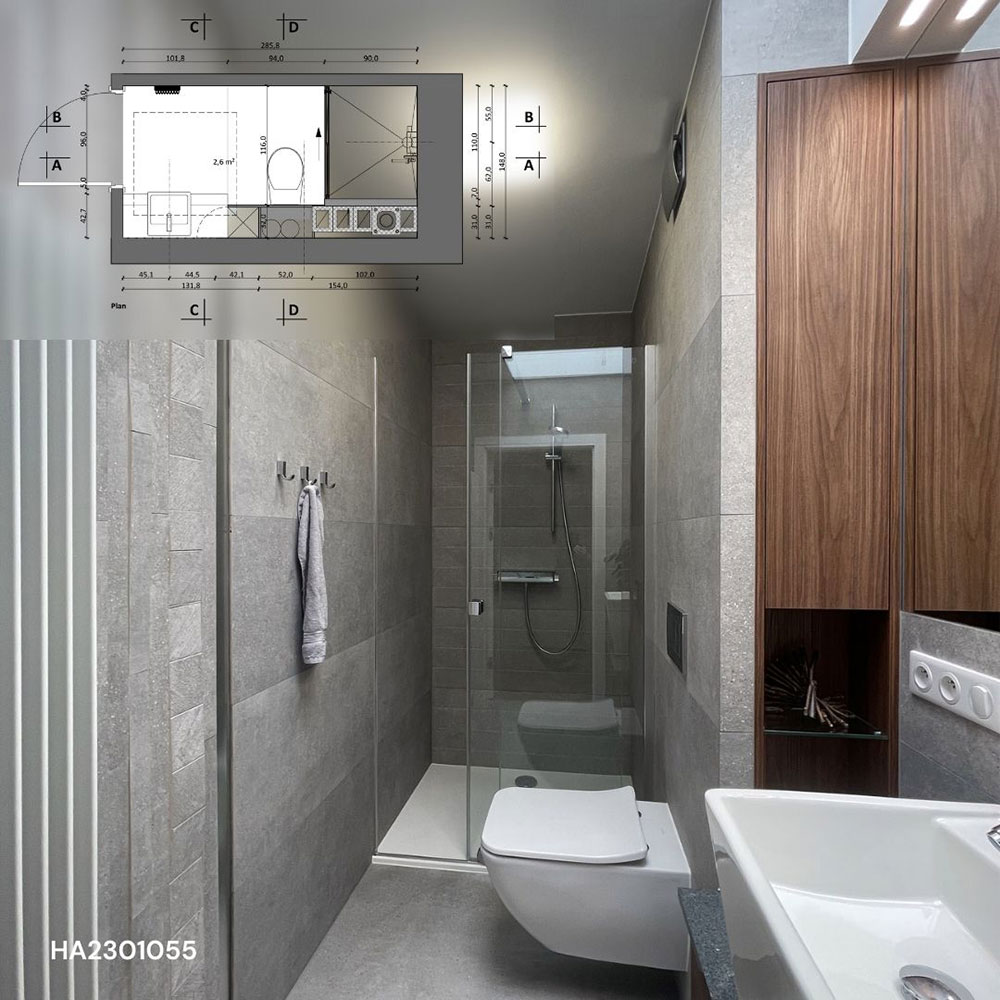Architect / Designer:
Copyright:
Country:
Completed bathroom design by the principles of ecological design. Waste reduction to a minimum was planned at the design stage. Waste was used to build a spatial structure that is an artistic statement on the theme that even trash can turn into something beautiful. It fulfills several functions: aesthetic, biophilic, diffusing light in the interior, and reducing waste. The project considers the biophilic design framework: 1. Direct experience of nature, i.e., contact with the features of the natural environment in the built environment, such as natural light, plants, and water. 2. Indirect experience of nature involves contact with a form inspired by the natural environment and natural materials, textures, and colors such as wood and stone. 3. Experience of space and place – refers to the spatial features characteristic of the natural environment that have contributed to improving human health and well-being. Examples include perspective, coziness, and intuitiveness. An essential aspect of this project was to save electricity, and thus the forms, textures, and colors that favor the spread of daylight and artificial light throughout the interior.
Eco-design can apply to large spaces but also to small ones. The sustainable, local, and energy-saving architecture allows you to make conscious decisions that impact the natural environment. According to the principle of biophilic design, every contact with nature contributes to people’s physical and mental health.










